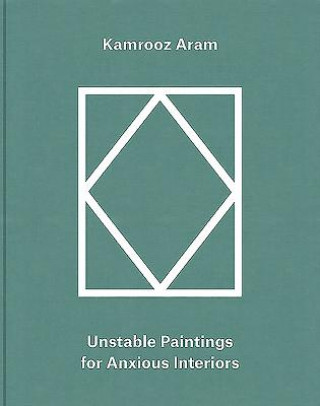
Kod: 04765414
Kamrooz ARAM
Autor Eva Diaz, Kamrooz Aram, Media Farzin, Murtaza Vali
This monograph on Iranian-born, Brooklyn-based painter Kamrooz Aram (b.1978) presents the Palimpsest series, which was in part inspired by graffiti on the streets of New York, and its constant painting-over by the authorities, onl ... więcej
- Język:
 Angielski
Angielski - Oprawa: Twarda
- Liczba stron: 80
Wydawca: Anomie Publishing, 2014
- Więcej informacji o książce

139.58 zł
Zwykle: 182.04 zł
Oszczędzasz 42.45 zł
Dostępność:
50 % szansa Otrzymaliśmy informację, że książka może być ponownie dostępna. Na podstawie państwa zamówienia, postaramy się książkę sprowadzić w terminie do 6 tygodni. Gwarancja pełnego zwrotu pieniędzy, jeśli książka nie zostanie zabezpieczona.
Otrzymaliśmy informację, że książka może być ponownie dostępna. Na podstawie państwa zamówienia, postaramy się książkę sprowadzić w terminie do 6 tygodni. Gwarancja pełnego zwrotu pieniędzy, jeśli książka nie zostanie zabezpieczona.Przeszukamy cały świat
Zobacz książki o podobnej tematyce
-

Wild Things
77.58 zł -7 % -

Process Control for Sheet-Metal Stamping
566.96 zł -

Walking Home From Mongolia
61.39 zł -23 % -

Optimization Techniques for Solving Complex Problems
858.49 zł -

Managing Yourself for Excellence
55.52 zł -4 %
Bon podarunkowy: Radość gwarantowana
- Podaruj bon o dowolnej wartości, a my się zajmiemy resztą.
- Bon podarunkowy dotyczy całej naszej oferty.
- Możesz wydrukować elektroniczny bon z e-maila a następnie przekazać go obdarowanemu.
- Ważność bonu wynosi 12 miesięcy od daty wystawienia.
Powiadomienie o dostępności
Wpisz swój adres e-mail, aby otrzymać od nas powiadomienie,
gdy książka będzie dostępna. Proste, prawda?
Więcej informacji o Kamrooz ARAM
Za ten zakup dostaniesz 81 punkty
 Opis
Opis
This monograph on Iranian-born, Brooklyn-based painter Kamrooz Aram (b.1978) presents the Palimpsest series, which was in part inspired by graffiti on the streets of New York, and its constant painting-over by the authorities, only for it to become covered again in graffiti. The ongoing cycle of painting, covering-up and repainting in the urban environment connects with Aram s long-standing fascination with modernism and the legacies of Abstract painting.Aram explains: The word palimpsest derives from the Greek term for a manuscript that has been scraped down so it can be reused. However, this process of erasure is always incomplete and traces of previous layers remain visible beneath the most recent marks. I find the idea of painting as palimpsest compelling because such a painting reveals its own past. The concept of the palimpsest in relation to Aram s practice is explored further in the publication in texts by Eva Diaz, Professor of Contemporary Art at Pratt Institute in New York, and art historian and critic Media Farzin.As discussed in an engaging interview between the artist and critic and art historian Murtaza Vali, Aram s interest in painting as palimpsest evolved over years of observing and photographing walls in cities across the world, from Brooklyn and Queens to Beirut and Istanbul. The worn walls of Beirut still bear the scars of the civil war, while in Brooklyn, years of graffiti and its covering-up reveal the history of New York City. This phenomenon takes on a different, but related meaning in a city such as Istanbul, where the graffiti is the result of public demonstrations related directly or otherwise to the Gezi Park protests. Aram states: The graffiti was obviously political and so the state s response was rapid. The protesters would write and the state would cover it up immediately. A photo essay and text by the artist further explore notions of the palimpsest and covering-up.In the Palimpsest series, a floral motif that Aram appropriated from a Persian carpet on sale in a shop in Manhattan becomes a key element in the series, submerging and re-emerging within the many layers of accumulated and erased marks on his canvases. Working serially, the artist begins each painting with this floral form, drawn across the surface of the canvas in a grid, creating an overall pattern. Aram then begins destroying and rebuilding this pattern through a process that involves additive as well as subtractive mark-making: wiping away and scraping down the painted surface over time to reveal previous layers. The relationship between West and East, and more specifically between the United States and the Middle East, has long been a key concern in Aram s life and work. Central to Aram s practice to date is the interface between Middle Eastern traditions of pattern-making, decoration and ornamentation, and the 20th century Western tradition of modernist painting, with geometry often intersecting the two worlds. The mixing of these once diametrically opposed paradigms tells a more complex story in Aram s paintings of interwoven cultures, interconnected politics, and of visual languages that collide, recede and reemerge over time.Kamrooz Aram graduated with an MFA from Columbia University, New York, in 2003. Since then his work has been widely exhibited internationally and featured in publications such as The New York Times, The New Yorker, The Village Voice, Art in America, Artforum.com, ArtAsiaPacific, and Bidoun. Aram was a recipient of the Abraaj Group Art Prize 2014. The publication, illustrated with over fifty plates, photographs, and details, has been edited by Yasmin Atassi, designed by Joe Gilmore / Qubik, printed by Die Keure, Bruges, and co-published by Green Art Gallery, Dubai, and Anomie Publishing, UK."
 Szczegóły książki
Szczegóły książki
Kategoria Książki po angielsku Humanities History History: earliest times to present day
139.58 zł
- Pełny tytuł: Kamrooz ARAM
- Podtytuł: Palimpsest: Unstable Paintings for Anxious Interiors
- Autor: Eva Diaz, Kamrooz Aram, Media Farzin, Murtaza Vali
- Język:
 Angielski
Angielski - Oprawa: Twarda
- Liczba stron: 80
- EAN: 9780957693661
- ISBN: 0957693664
- ID: 04765414
- Wydawca: Anomie Publishing
- Waga: 878 g
- Wymiary: 325 × 255 × 14 mm
- Data wydania: 01. May 2014
Ulubione w innej kategorii
-

Learn to Read Ancient Sumerian
152.73 zł -

Russian Journal
61.39 zł -23 % -

King's Two Bodies
126.03 zł -4 % -

Heart of Europe
89.11 zł -23 % -

Armies of Castile and Aragon 1370-1516
67.86 zł -15 % -

One Hell of a Gamble
133.92 zł -5 % -
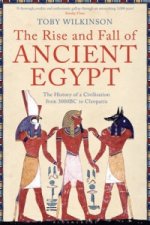
Rise and Fall of Ancient Egypt
79.80 zł -23 % -

Guns, Germs, and Steel
50.87 zł -4 % -

The Origins of Totalitarianism
40.35 zł -36 % -

Illustrated Encyclopedia of Uniforms of World War I
93.56 zł -23 % -

The Art of Combat
144.44 zł -
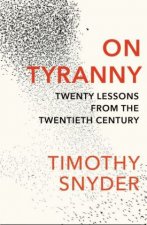
On Tyranny
35.29 zł -31 % -
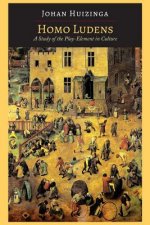
Homo Ludens
54.51 zł -

Tuesdays With Morrie
47.53 zł -23 % -

History of the Decline and Fall of the Roman Empire
61.39 zł -23 % -
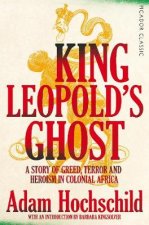
King Leopold's Ghost
52.19 zł -23 % -
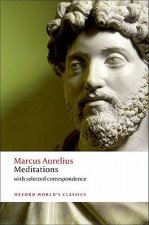
Meditations
45.71 zł -4 % -

Streams of Gold, Rivers of Blood
152.73 zł -

Travels of Ibn Battutah
52.19 zł -23 % -

Augustus
70.70 zł -23 % -

Age Of Capital
70.70 zł -23 % -

Egyptian Book of the Dead: The Book of Going Forth by Day : The Complete Papyrus of Ani Featuring Integrated Text and Full-Color Images (History ... M
146.16 zł -5 % -

Deng Xiaoping and the Transformation of China
126.13 zł -4 % -

Age Of Extremes
81.02 zł -15 % -

John Skylitzes: A Synopsis of Byzantine History, 811-1057
164.26 zł -4 % -

Arms and Armour of Late Medieval Europe
47.53 zł -23 % -

Alexander the Great
85.97 zł -5 % -

End of Days
41.67 zł -5 % -

Shake Hands With The Devil
61.39 zł -23 % -

Complete Roman Army
93.56 zł -23 % -

Distant Mirror
61.39 zł -23 % -

Fall of the Roman Empire
93.96 zł -5 % -

Fifties
93.96 zł -5 % -

After the Ice
79.80 zł -23 % -

Histories
24.67 zł -23 % -

Savage Continent
70.70 zł -23 % -

Oxford IB Diploma Programme: The Cold War: Superpower Tensions and Rivalries Course Companion
225.46 zł -

Age Of Empire
70.70 zł -23 % -

Pompeii
52.19 zł -23 % -

Life in a Cave
27.20 zł -15 % -

Oxford Illustrated History of Prehistoric Europe
169.63 zł -9 % -

On the Ocean
185.61 zł -

Flowers of Battle The Complete Martial Works of Fiore dei Liberi Vol 1
601.96 zł -

On Ancient Warfare
183.79 zł -6 % -

Access to History for the IB Diploma: Causes and effects of 20th-century wars Second Edition
134.12 zł -15 % -

Safe Area Gorazde
89.11 zł -23 % -

Yoga Body
85.97 zł -5 % -

Fear and Loathing on the Campaign Trail '72
61.39 zł -23 % -

Fall of Carthage
70.70 zł -23 %
zadowolonych klientów
Od roku 2008 obsłużyliśmy wielu miłośników książek, ale dla nas każdy był tym wyjątkowym.
Copyright! ©2008-24 libristo.pl Wszelkie prawa zastrzeżonePrywatnieCookies


 21 milionów książek
21 milionów książek Dostawa 10.99 zł
Dostawa 10.99 zł (32) 444 93 66 (8-15.30h)
(32) 444 93 66 (8-15.30h)